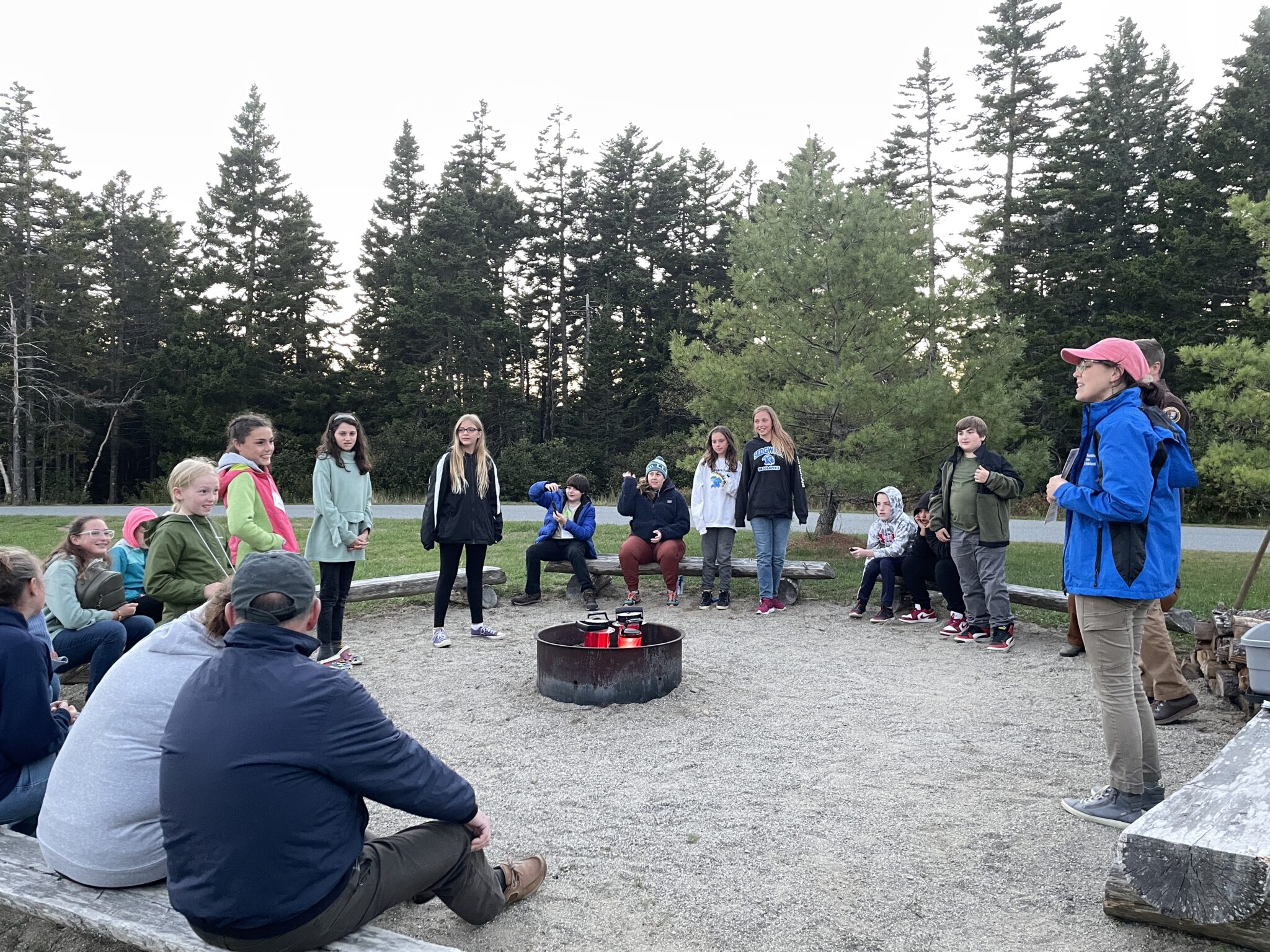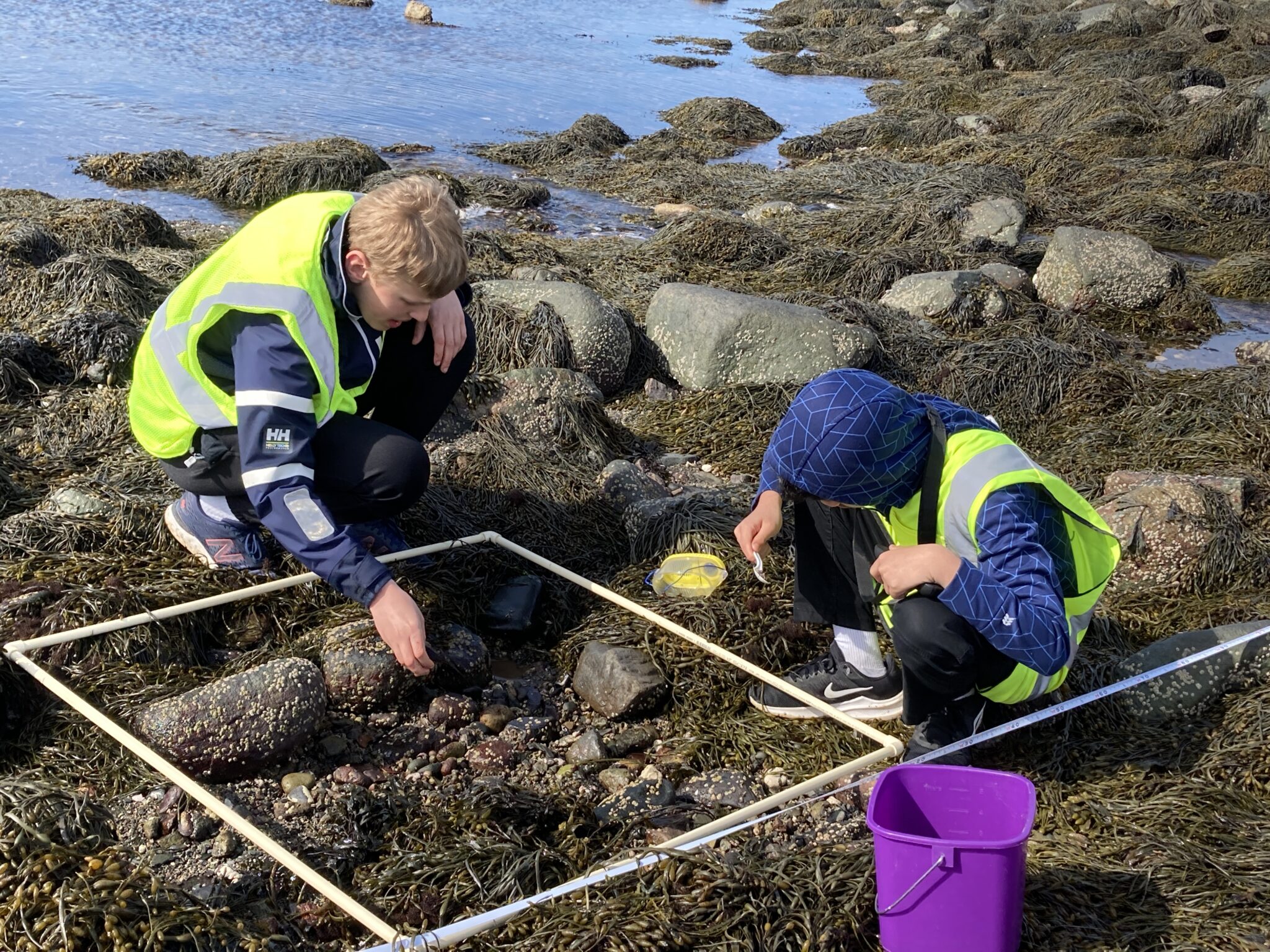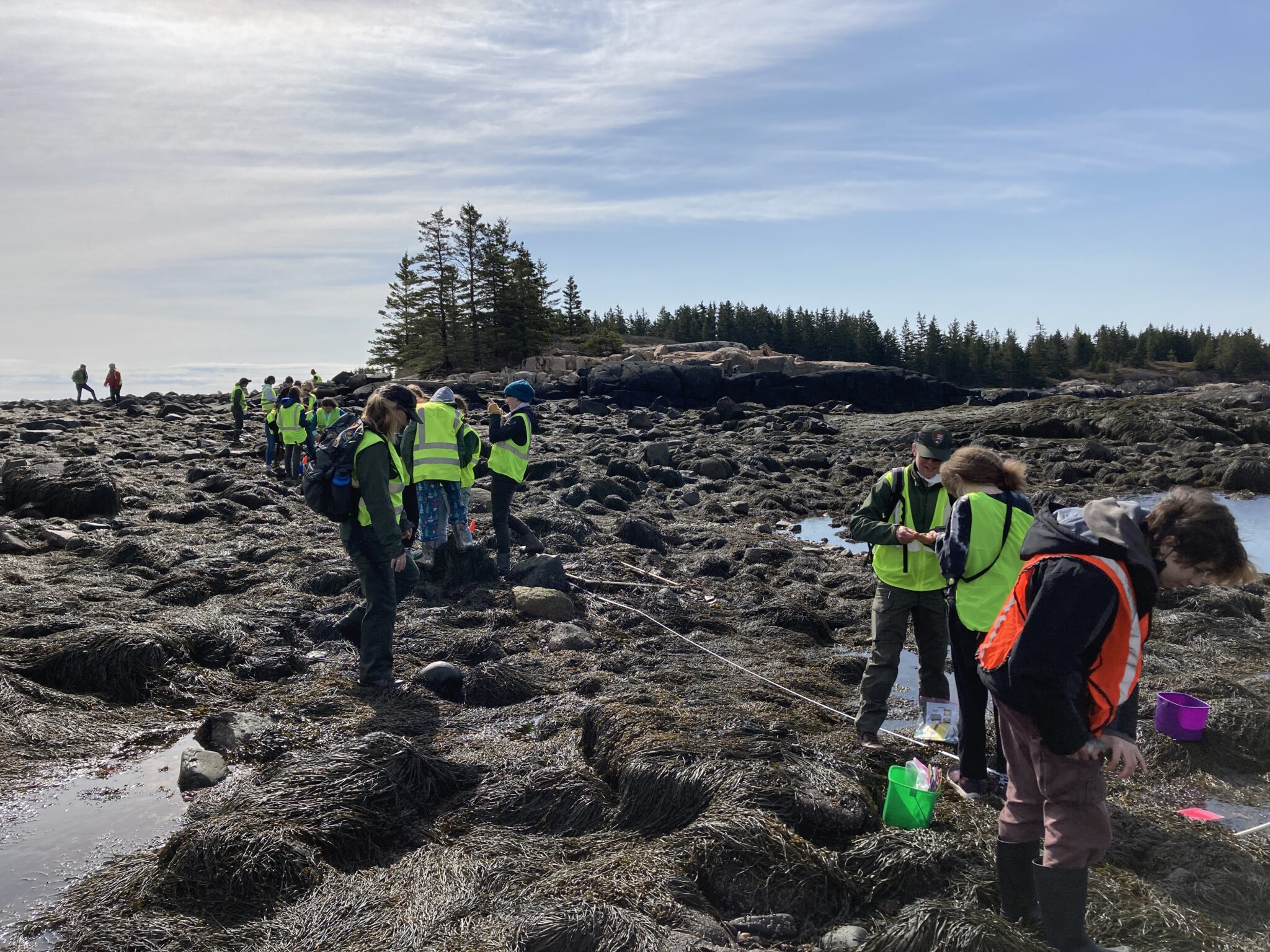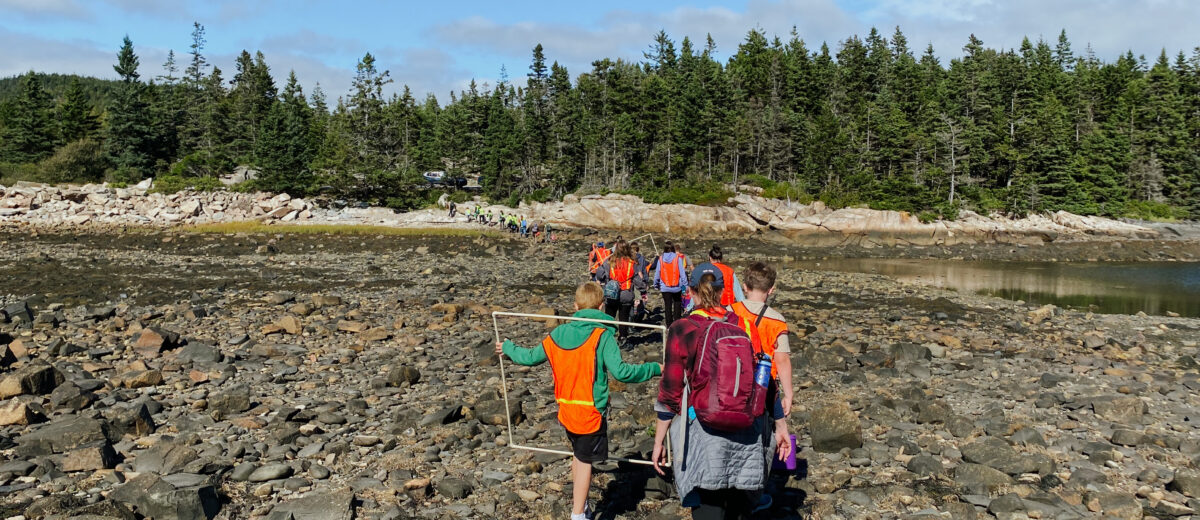story by Mikayla Gullace, 2022 Cathy and Jim Gero Acadia Early-Career Fellow in Environmental Science Education
As I stroll across campus on an early February morning, I can’t help but notice how quiet it is. A gentle breeze whistles in my ear, my boots crunch in the snow, a few nuthatches chirp in the trees beside me; otherwise, it’s silent. There is such a stark contrast between this stillness and the rambunctious laughter that will fill the air as students participating in the Schoodic Education Adventure (SEA) program – a multi-day, overnight outdoor education learning experience for middle schoolers – return to campus for the spring semester.

Since the fall season ended in November, National Park Service (NPS) Education Rangers and Schoodic Institute staff have been anxiously awaiting and preparing for the oncoming spring. Schools begin reserving their spots months in advance and choose between a wide variety of educational programs. Housing and meals must be booked, program supplies replenished, schedules made, and bountiful snacks acquired. This spring, however, is setting out to be a bit different than the fall: new seasonal staff members are coming on, we have several schools coming for their first experience in Acadia, and a few of our programs are getting revamped.
The typical day at SEA starts when those big yellow school buses pull up outside of Eliot Hall. Excited (and sometimes nervous!) kids pile out, suitcases in hand, and sprint toward the bunkhouse to pick out their beds. Once settled into their home for the next few days, students are guided through some basic Leave No Trace principles to ensure everyone shows respect to the land, the organisms that inhabit it, and the people that rely on it. We then might split into groups, with some students getting to check out our large floor map of Maine and the surrounding waters while others participate in a scavenger hunt activity involving the use of compasses, which is often a new skill for many students. When lunchtime finally arrives, the classes make their way over to our dining hall, where Schoodic Institute’s kitchen staff has prepared a delicious meal served with a side of some “bussin’ juice,” as one kid stated in their thank you note reflecting on the week. Lunchtime then segways into our afternoon program, which, if the tides are right, may involve participation in a citizen science project assessing invasive crab populations.

Students might use a dichotomous key (and hopefully learn that not all coniferous trees are pines!), face their fear of crab claws, gape in awe while imagining what Acadia looked like during the last ice age, compare their own senses to the unique adaptations of nocturnal animals, and, most importantly, form closer relationships with their classmates. There’s usually some rambunctious shouts during free time at the basketball courts, lots of singing and riddles over evening s’mores, and more than a few tired faces the following morning as students share their amusing stories from the bunkhouse.
A day at SEA is a chance for students to take their learning into different outdoor environments, push themselves out of their comfort zones and routines, and communicate with classmates and educators they normally might not interact with. SEA is also a place where students with varying learning styles can come forth and shine, allowing their teachers and peers to view them in a new light. And lastly, it’s a time for NPS and Schoodic Educators to share their love of the outdoors while embracing the true magic of the Schoodic Peninsula. Here’s to another great SEAson!

